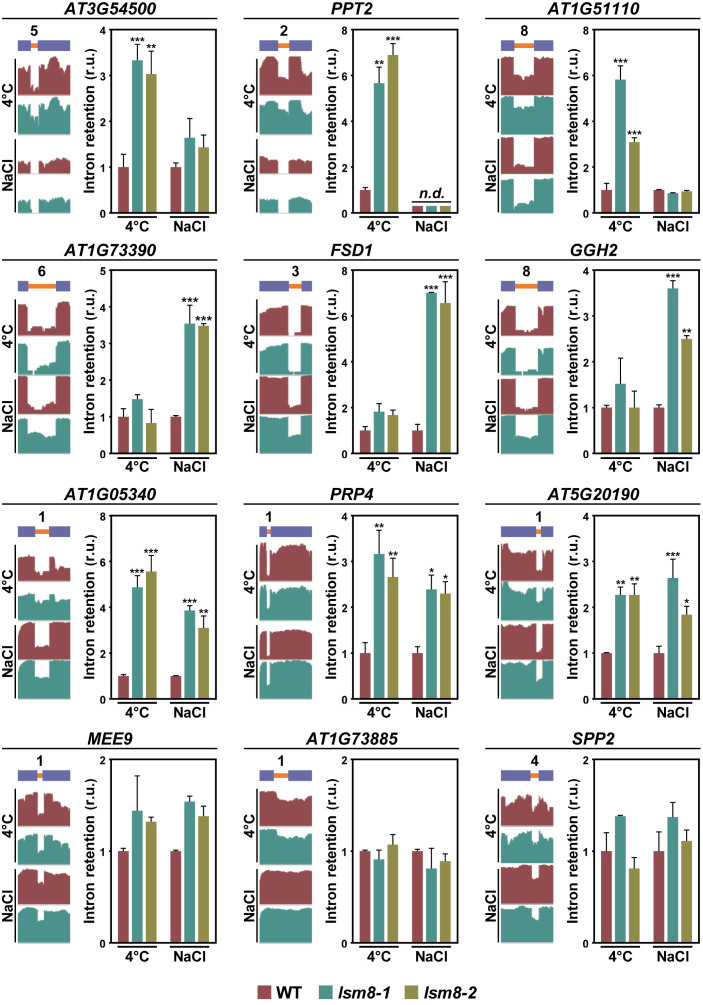Figure 4.
The Arabidopsis LSM2–8 complex controls the splicing of specific alternatively spliced introns in response to different environmental conditions. Different alternatively spliced introns specifically retained in lsm8 plants under cold (top line), high salt (second line) or both conditions (third line). The bottom line shows alternatively spliced introns non-affected in lsm8 plants under any condition. The name of the gene containing the corresponding alternatively spliced intron is indicated in each case. A diagram of the pre-mRNA regions, including the retained introns (orange bars) with their relative positions in the representative gene model and the flanking exons (blue bars), together with the captures of the corresponding read coverage tracks obtained from the IGV software is shown in the left. The quantification of retained introns in WT, lsm8-1 and lsm8-2 plants exposed to low temperature (4°C) or salt stress (NaCl) by qPCR assays is displayed in the right. Bars indicate the standard error of the mean (n = 3). Asterisks (*) indicate significant differences (*P ≤ 0.01, **P ≤ 0.001, ***P ≤ 0.0001) between lsm8 mutants and WT plants, as determined by ANOVA-test. n.d. indicates non-detected events by qPCR.

